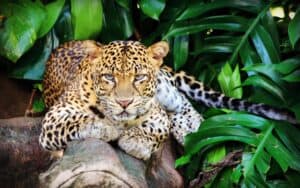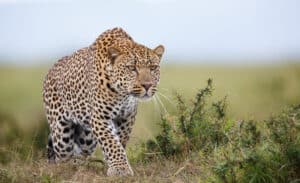Continue reading for our analysis...
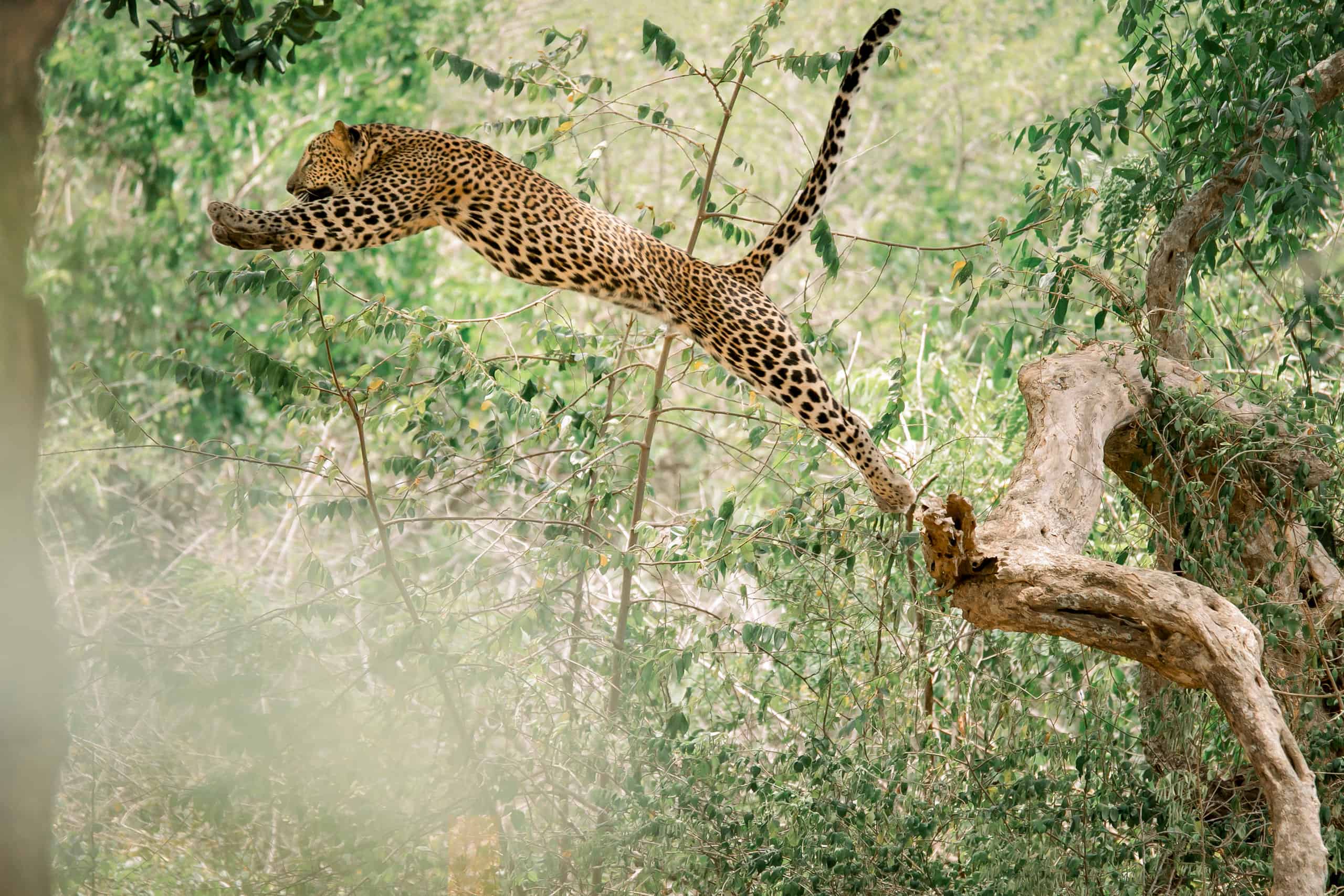
It’s not often that the wild animals we see in our clips have a name, but this one does! Meet Ravenscourt the leopard who lives on the Savanna private game reserve in South Africa.
He has successfully caught an impala and is doing what most leopards would do in this situation – dragging it up into a tree so that he can enjoy it in peace. The idea behind this behavior is that not many other predators can climb trees and pinch them off him. But this lion didn’t get the memo – and up she goes!
There follows a violent confrontation at a great height. The Impala plummets to the ground. Meanwhile, the lion looks a little unsteady and seems to be wishing she had not climbed so high!
A couple of times she looks as if she is going to fall but that does not stop her from taking another swipe at the leopard. Eventually, the lion gets down and is scared away by a herd of elephants that have been attracted by the commotion.
Leopards or Lions: Which Is Best at Climbing?
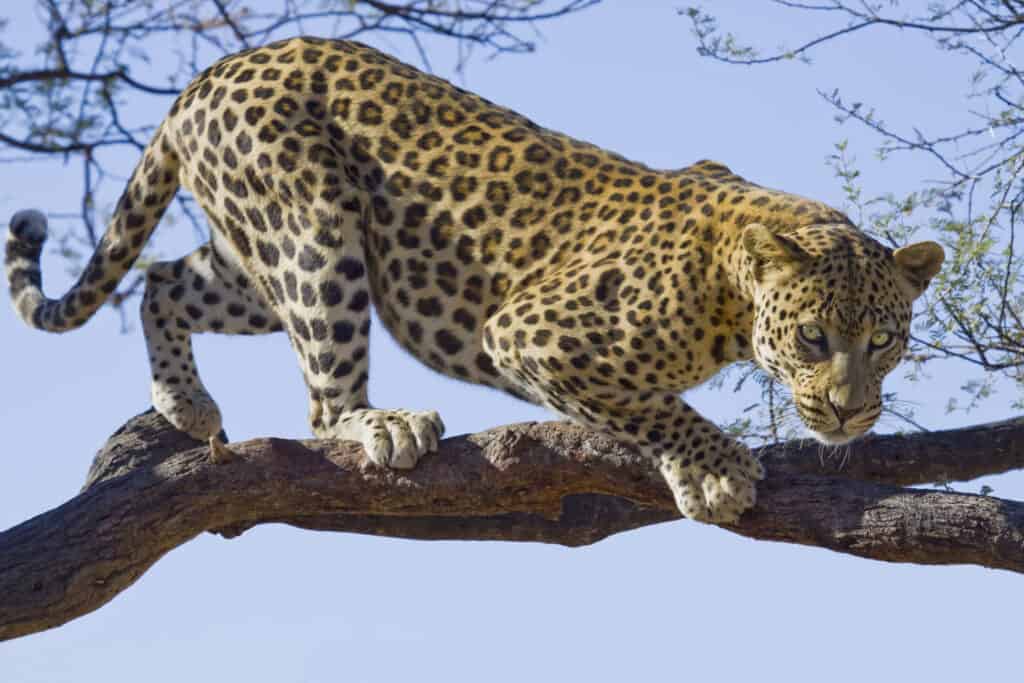
Leopards are excellent at climbing trees
©iStock.com/lightstock
From simply looking carefully at this clip, it is obvious that the leopard is both more confident and competent at climbing the tree.
Ravenscourt bounds up the tree with an impala in his mouth. He is able to negotiate the smaller branches with ease and traverses the heights gracefully. In comparison, the lion is clearly struggling. She nearly slips a couple of times and eventually makes an undignified descent – arriving on the ground with a thud!
So, the answer is that leopards are far better at climbing trees than lions. This is because of their physiology.
Why Are Leopards So Good at Climbing Trees?
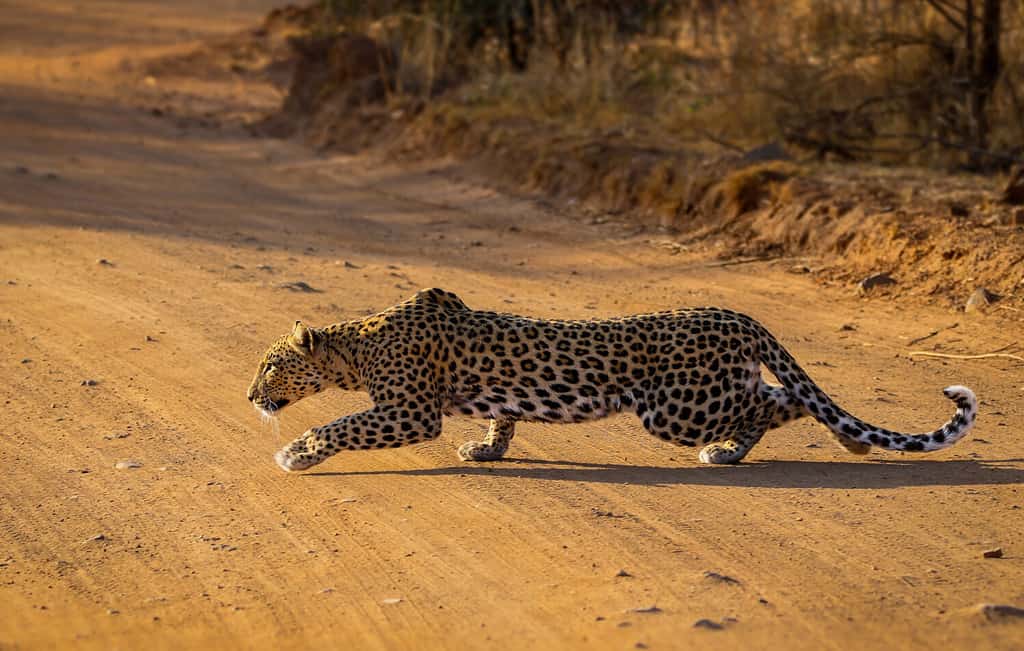
Due to their lightweight body compared to lions, leopards can easily navigate smaller branches and require less energy to climb trees.
©Heinrich Neumeyer/Shutterstock.com
A leopard’s body is lightweight compared to a lion which means that the smaller branches can hold them and it takes less energy to get their body up the tree. Their shoulders and forelimbs are very strong. As a result, their power-to-weight ratio is high which is essential for climbing.
Furthermore, they have protractile claws – they can be drawn back into their paws which keep them sharp. The claws grip bark firmly when climbing.
Their front limbs are attached to their collarbone only by ligament and muscle so they move freely making them very agile. Also, their mobile backbone allows them to twist and turn which is essential for maintaining their balance. Finally, they use their long and slender tail for even more balance!
How Large Do Elephants Get?
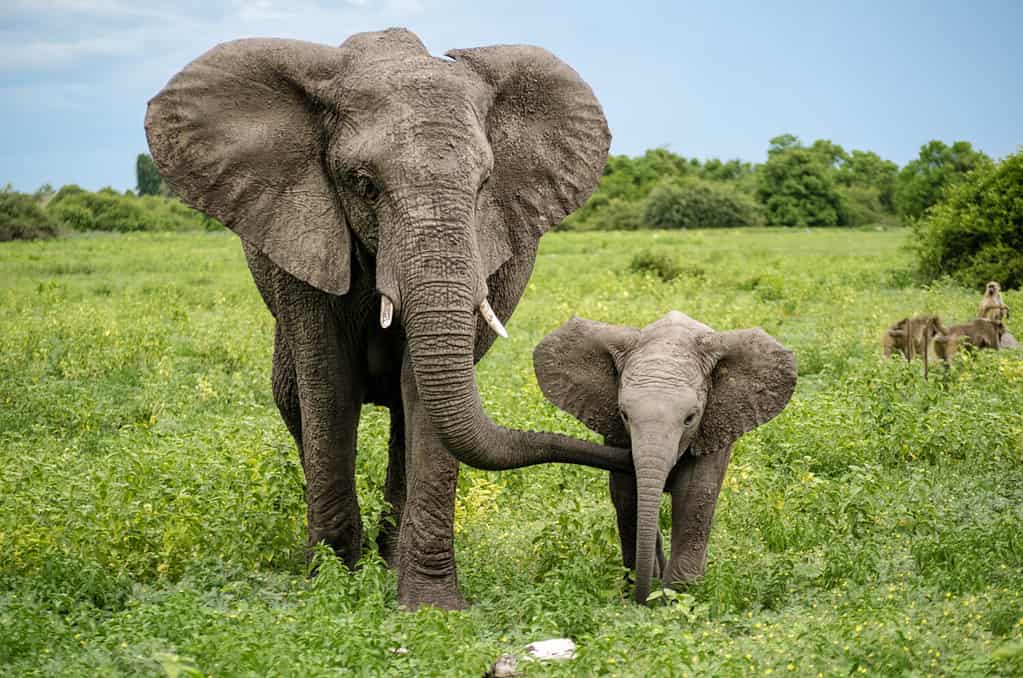
The largest recorded elephant was a grown male African savanna elephant.
©Aelice/Shutterstock.com
The African Savanna or Bush elephant claims the title of the world’s largest terrestrial creature. Adult males, or bull elephants can weigh 11,500 pounds! These males achieve their full size around 35-40 years of age, a point that’s more than half their lifespan, as wild elephants can live up to 60-70 years.
The biggest recorded elephant was a grown male African savanna elephant, tipping the scales at approximately 24,000 pounds and standing 13 feet tall at the shoulder.
While most elephants don’t attain such size, African elephants do surpass Asian elephants in terms of growth.
Is it Normal Behavior for an Elephant to Save Another Animal?
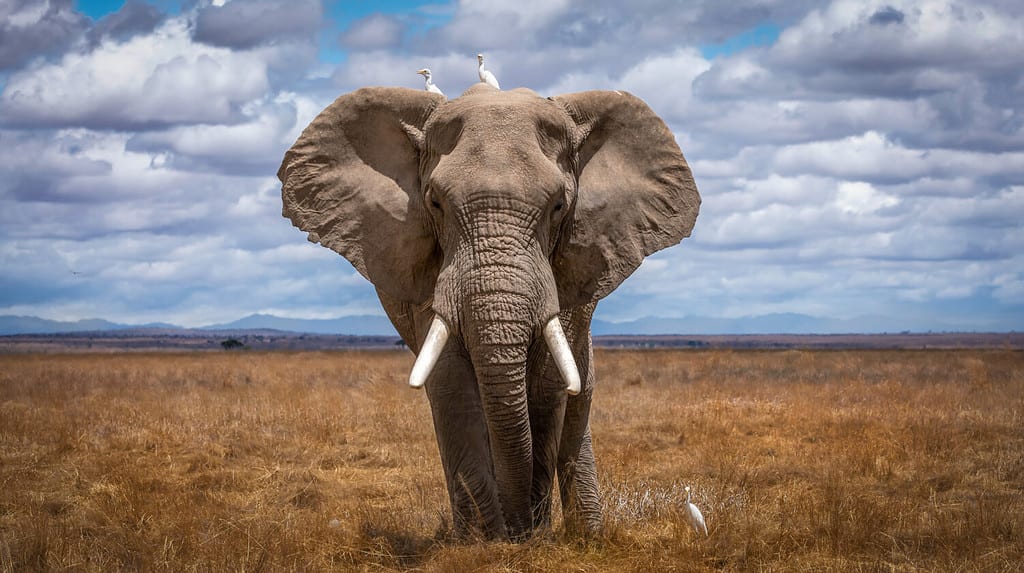
Elephants have been known to show compassion towards humans and other animals.
©Cautron Live/Shutterstock.com
The short answer here is a big yes! Elephants, beyond their assistance to humans, have demonstrated incredible acts of kindness towards other animals and even elephants from different herds.
These majestic beings seek love and compassion, displaying a strong sense of protection not only for their own young but also for the offspring of others. Their nurturing nature extends beyond boundaries, revealing the depth of their empathy and care for all beings around them.
Other playful activities, such as chasing, mounting, wrestling, and sparring, are common occurrences among elephants of all ages.
Thank you for reading! Have some feedback for us? Contact the AZ Animals editorial team.




